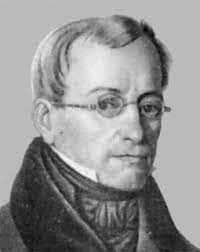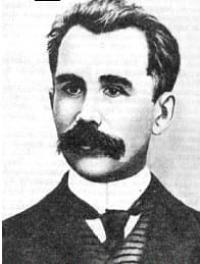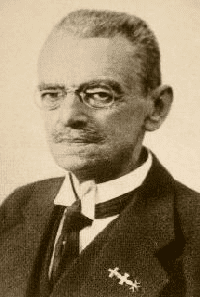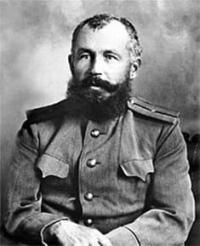You are here
History of Khazar Reserve.


![Gustav Ivanovich Radde (German Gustav Ferdinand Richard Radde, November 15 [27], 1831, Danzig - March 3 (16), 1903, Tiflis) - Russian geographer and naturalist, corresponding member of the St. Petersburg Academy of Sciences.](https://www.silkadv.com/sites/default/files/styles/article-teaser/public/2_gustavradderet_min_0.jpg?itok=Y1pQEhpL)


Natural reserves and parks of Turkmenistan.
“Makhtumkuli traveled through many different countries,
But in my heart I never felt so many wounds:
Here is the tender peri, oscillating like a gazelle,
e is looking for a ford among the turbulent waters of Gurgen!"
"Swans". Translation by A. Tarkovsky. Makhtumkuli.
Trip from Balkanabat to Khazar Reserve.
The history of the development of the nature reserve in this region is connected with the study and organization of the protection of the largest wintering grounds for waterfowl in the southeast of the Caspian Sea.
One of the first descriptions of the accumulation of waterfowl on the Turkmen coast of the Caspian Sea was given by G.S. Karelin (1883), who conducted geographical research here as early as 1832 and 1836. N. A. Zarudny (1896), G. Radde (1884), and from 1896 to 1911 made observations on the Atrek and in some other places along the coast. G. Loudon visited Krasnovodsk Bay and Gasan-Kuli.
In 1923, the expedition of M. K. Laptev worked here, and in the winter and spring of 1932, with a group of scientists, he again examined these areas and prepared a rationale for organizing a reserve in the Gasan-Kuli area.
Prior to this, two ornithological reserves already existed in the Caspian: Astrakhan and Kyzyl-Agach. The reserve was established in October 1932. A year later, it became known as the All-Union Gasan-Kuli Ornithological Reserve.
In the year of organization, the total area of the reserve was 97,000 hectares, of which 78,000 hectares are water areas. It included the floodplain of the river. Atrek with the Gasankuli Bay and the adjacent sea coast. The strip of protected land was almost 5 km.
The history of the creation of the reserve dates back to the expedition of M.K. Laptev 1923. In 1932, after a second survey, a rationale was prepared for organizing a reserve in the Gasan-Kuli region. Prior to that, two ornithological reserves already existed in the Caspian: Astrakhan and Kyzyl-Agach.
However, the protection of wintering places for birds in the Caspian continued to deteriorate, in connection with which the All-Russian Society for Nature Conservation turned to the Central Executive Committee of the Turkmen SSR with the need to create a reserve on the southeastern coast of the Caspian Sea to protect the largest wintering of waterfowl.
The reserve was created by the Decree of the Council of People's Commissars of the TSSR No. 252 of October 3, 1932. Soon, it was renamed into the All-Union Gasan-Kuli Ornithological Reserve. Initially, the total area of the reserve was 97,000 hectares, of which 78,000 hectares are the waters of the Eastern coast of the Caspian Sea.
It also included the floodplain of the Atrek River with the Gasankuli Bay. The strip of protected land was almost 5 kilometers. In 1968, with the annexation of the Krasnovodsk (now Khazar) site and the transfer of the base to the city of Krasnovodsk, the reserve became known as the All-Union Krasnovodsk Ornithological Reserve.
In 1990, the Ogurchinsky Reserve, located on the island of the same name, was attached to it. In 1974, the Khazar site was recognized as a Ramsar wetland, the main purpose of which was the protection of waterfowl and semiaquatic birds of the West Siberian-Caspian-Nile population (migration flow 5 - 8,000,000, wintering for 4 - 5 months - about 350,000 birds).
About 95% of the area is lands and waters of the Khazar State Reserve. According to the Land Code of Turkmenistan, the Law on Nature Protection of Turkmenistan, they are withdrawn from economic use and transferred to the reserve for unlimited use, are under the jurisdiction of the Ministry of Nature Protection Turkmenistan.
About 4% of the land (8.8 hectares) is in the long-term use of the Turkmen societies of hunters and fishermen. About 1% of the water area of the land is in allotment Turkmenbashi seaport and other industrial facilities.
Excursions and tourism are allowed in the buffer zone of the Khazar State Reserve, covering a kilometer-long strip of coastal land along the entire protected area. The reserve has the status of a legal entity of a state institution - a state nature reserve. It is under the jurisdiction of the Department of Fauna and Flora Protection of the Ministry of Nature Protection of Turkmenistan.
The activity is regulated by the Law “On State Specially Protected Natural Territories” (05/19/1992), Model regulation on the state reserves of Turkmenistan (PB-1137 dated 12/15/1995) and a number of regulations specifying the status and nature protection regime.
The purpose and tasks of the reserve are provided with long-term legislative protection of the state. The location of the reserve corresponds to the goals of creation.
History of biological research of the Khazar Reserve.
The first biological studies in the South-Eastern Caspian were carried out in XVIII - XIX century as part of the expeditions of the Russian Empire. Since these expeditions were generally military hydrographic nature, there were no professional biologists in them, and the first observations were made by naval officers or geographers.
For example, in 1847 Lieutenant Zherebtsov registered flamingo populations known before time only in Africa. One of the first descriptions of the accumulation of waterfowl on The Turkmen coast of the Caspian Sea was given by G.S. Karelin (1883), who conducted geological surveys here research back in 1832 and 1836.
On the Atrek and in some other places along the coast they led observations N.A. Zarudny (1896), G. Radde (1884), from 1896 to 1911 G. Loudon visited the Krasnovodsk Bay (now Turkmenbashi) and Gasankuli (now Esenguly).
The expedition of M.K. Laptev 1923. The continuation of research into the nature of the reserve from the beginning of the 30s of the XX century is already associated with its scientific activities. The work carried out in subsequent years by L. K. Shaposhnikov, K. A. Vorobyov, Yu. A. Isakov, along with the observations of A. V. Samorodov, S. A. Aleksandrov, as well as E. S. Ptushenko and G. P Dementiev laid the foundation for a systematic study of the reserve's birds.
Justification for the existence of the reserve. In the system of protected areas of Turkmenistan, the Khazar State Reserve is of particular interest, as it is the only marine specially protected natural area. Initially, the main goal of creating the reserve was to preserve mainly migratory bird species and their habitats (stops) on migration routes, to conduct scientific research and monitoring observations.
Through the eastern coast of the Caspian Sea runs one of the oldest and most powerful flyways, several thousand kilometers long, connecting the birds of the Palearctic with Africa and the Indian Peninsula. Tens of millions of birds fly along the coastline of the sea twice a year.
Some birds (including more than 600,000 waterfowl and marsh birds) remain in the Khazar Reserve for the entire winter period. At present, the reserve as a whole copes with this task. The Esenguly section of the reserve is the only region in Central Asia where a close relative of the gray partridge, the francolinus L., 1766, has survived.
The wetlands of the reserve are included in the list of the IDA project of the Ramsar International Convention, as they are of “international importance mainly as habitats for waterfowl”. The territory of the reserve is characterized by rich biodiversity, endemicity of plant and animal species; 53 species (6 - plants, 47 - animals) are listed in the Red Book of Turkmenistan (1999), more than 20 - in the IUCN Red List.
At the same time, the reserve was conceived as a link in the network of specialized international ornithological territories; at present, it combines the functions of an element of the national and three international (Ramsar, Caspian and Central Asian) networks of protected areas.
Geographical coordinates of Khazar Reserve: N37°39'57.59" E53°52'40.54"
Authority:
"Reserves of Central Asia and Kazakhstan". Under the general editorship of R.V. Yashchenko. Tethys edition. Editorial Board of the Scientific Society "Tethys": R.Ya. Yashchenko chairman), O.V. Belyalov, V.P. Krivenko, O.E. Lopatin, I.V. Mitrofanov, K.M. Pachikin. Marmazinskaya N. July 25, 2006. Berkeliev T. http://iucnca.net







